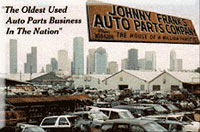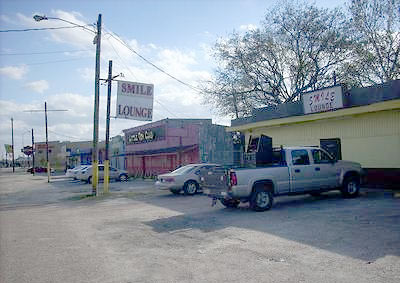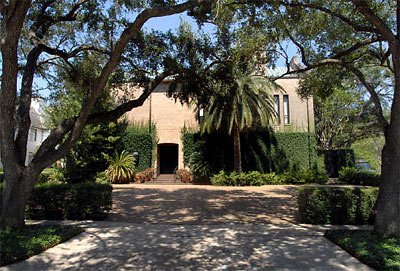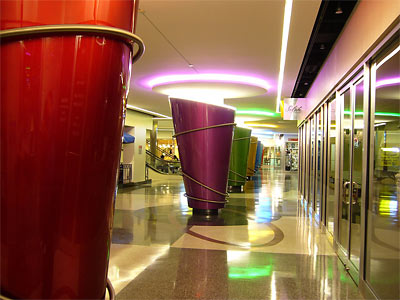 It’s not just the rice silos that’ll be leaving the First Ward. Next thing you know, they’ll be demolishing . . . the used-auto-parts yard across the street. A source very close to Charles Kuffner reveals that the owner of Johnny Franks Auto Parts at 1225 Sawyer St., across the street from the Mahatma Rice silos, has already sold the land to residential developers.
It’s not just the rice silos that’ll be leaving the First Ward. Next thing you know, they’ll be demolishing . . . the used-auto-parts yard across the street. A source very close to Charles Kuffner reveals that the owner of Johnny Franks Auto Parts at 1225 Sawyer St., across the street from the Mahatma Rice silos, has already sold the land to residential developers.
But wait. Johnny Franks Auto Parts bills itself as “The Nation’s Oldest Salvage Yard.” Is this true? If so, how could Houston let such an important historical site be destroyed? Founded in 1910, the salvage yard for years advertised itself as “the house of a million parts.” Sadly — like so many other historic structures in Houston — that may be its ultimate fate.
After the jump, Kuffner counts the reasons why there’s probably no stopping residential development from taking place on this historic site:




